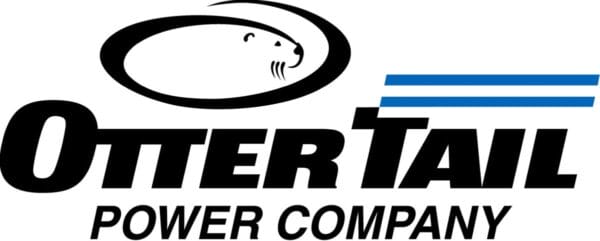For over a century, Otter Tail Power Company has been a regional leader in providing energy solutions that light up homes and businesses and empower the communities they serve.
Steve Schoeneck, Vice President of Customer Service

"I've been in four different companies including working in economic development, sales, and as a CPA by trade. I've been with Otter Tail Power Company for around 20 years now and have been involved in a couple of different areas of the company. Doing business in North Dakota is fantastic, and I'm happy to serve the community and help keep the lights on."
- Steve Schoeneck, Vice President of Customer Service
Otter Tail Power Company’s Energy Generation
“Our generation mix includes coal-fired plants, wind power, combustion turbines, solar power, and hydroelectric plants. We also purchase electricity from the Midcontinent Independent System Operator (MISO) energy market when buying it is more economical than generating it ourselves. This mix ensures reliable, low-cost, and increasingly clean electricity 24 hours a day, 7 days a week.”
– Otter Tail Power Company Website
Otter Tail Power Company’s history began in 1907. “We’ve been in North Dakota since the inception, really. We’ve only expanded from there,” Schoeneck said. From its early days in Wahpeton, ND, and Fergus Falls, MN, Otter Tail Power has grown alongside the communities it serves, evolving into a rural company that’s as much a part of the landscape as the towns it energizes.
Otter Tail Power Company is structured around three business units, each directly serving the retail sector. Their field construction crews are dedicated to maintaining essential services, ensuring that the lights stay on for customers through construction and restoration efforts, aside from restoring power if necessary. In addition to the critical operational teams, the company operates call centers to provide responsive customer service and support. Furthermore, their sales and economic development team works to drive growth and sustain market presence.
With said emphasis on the retail aspect of utilities, Otter Tail Power focuses on the generation, transmission, and distribution of electricity, ensuring that every aspect of energy provision is handled with care and efficiency from multiple perspectives. “Customers’ utilities are broken down into three pieces,” Schoeneck said. “There’s the ‘generation piece’ (Do you make electrons?), the ‘transmission piece’ (Do you ship them over a geographic space?), and then the ‘distribution piece’ (Getting them to customers).”
Otter Tail Power’s Community Values
“Our tradition of giving to and caring for the communities we serve is at the core of who we are. In 2018, we established the Otter Tail Power Company Foundation with the mission to support young minds, invest in our current and future workforce, create vibrant culture and vital communities, improve health and human services, and protect our natural resources. We expect and are committed to diversity, equity, and inclusion as part of who we are, what we value, and how we achieve individual, business, and community success. In 2024, we’ll continue to focus our resources on initiatives that align with our priority giving areas, targeting our donations where it’s needed most, including:
- Community Enhancement, Arts, and Culture
- Education
- Environmental Stewardship
- Health and Human Services
– Otter Tail Power Company”
Empowering Communities 24/7
The impact of Otter Tail Power in North Dakota may not be seen every day by its residents, but it’s crucial to our community. Needless to say, Otter Tail Power has made itself a source of positive change in the region, yet they’re also boosting our state’s economy in more ways than one. “From an operational perspective, we manufacture most of our electronics right here,” Schoeneck said. “For instance, we have a plant in North Dakota that we’re a part owner in and operate. Somebody actually makes all the electrons right here and they’re transmitted over lines and distributed to substations and stepped down to go to folks’ homes and businesses.”
This dedication ensures that North Dakotans have access to reliable energy, come rain or shine. “People can take it for granted when they flip a light switch on, but there are people out there 24 hours a day, 7 days a week doing what it takes to keep it going,” Schoeneck said. “The folks working on the generators are doing an essential job. We have people out in the field daily, taking steps to maintain the system and keep it running smoothly and swapping out equipment as needed. While our goal is to keep costs low, we’re continually engaged in activities to ensure everything runs efficiently.”
Beyond keeping the lights on, Otter Tail Power plays a pivotal role in the economic development of the region. By maintaining a flexible rate structure and investing in local communities, the company helps ensure that both residents and businesses in rural towns can continue affordably. “Making sure that the electrical component of their business is not an inhibitor on someone’s budget is something we’re very conscious of,” Schoeneck said.
"We're one of the smallest investorowned utilities in the country, but we compete at a scale that benefits our customers. Our people are involved in our communities, and we think that's very important. We're able to be very effective and truly understand our customers because we're a part of those communities."
- Steve Schoeneck, Vice President of Customer Service
A Brief Timeline of Otter Tail Power Company’s History
1871
George Wright, considered the founder of Fergus Falls, built Central Dam along the Otter Tail River in this small Minnesota town.
1907
Wright and three other investors incorporated Otter Tail Power Company and began building Dayton Hollow Dam at a cost of $100,000.
1914
Otter Tail Power Company began operating the Hoot Lake hydroelectric plant, which the company had built northeast of Fergus Falls, on the Otter Tail River.
1936
Congress passes the Rural Electrification Act, and Otter Tail Power Company begins providing wholesale power to area cooperatives the following year.
1953
The transition from being a self-contained provider to being part of an integrated network of power suppliers is complete. The City of Fergus Falls agreed to sell its municipal system to Otter Tail Power Company which, in turn, agreed to build its new General Office there, to be occupied in 1955.
1989
To boost flat utility revenues, Otter Tail Power Company formed MidStates Development (later named Varistar) to acquire and oversee nonutility businesses.
2002
The company purchases the 900-kilowatt output of a wind generator along the Buffalo Ridge near Hendricks, MN.
2014
Through an extensive campaign, customers are encouraged to enroll in the company’s electronic billing and payment program to reduce costs associated with producing and mailing paper statements.
2015
Big Stone Plant’s air-quality control system (AQCS) begins commercial operation. To comply with federal and state environmental regulations, construction began in 2013. At a total cost of $384 million, half borne by Otter Tail Power Company, the AQCS is the largest project in our history.
2016
The company began the five-year process to relicense its five hydroelectric plants along the Otter Tail River.
2018
The company releases its first report using the Edison Electric Institute’s environmental, social, governance, and sustainability template, the first and only industry-focused and investor-driven reporting framework of its kind.
2022
In February, FERC issued its order for a new 40- year license for Otter Tail Power Company’s five hydroelectric plants along the Otter Tail River.
Otter Tail’s Innovation Amongst Obstacles
Otter Tail Power’s vision for the future is as bright as the communities it serves. With plans to repower wind farms and introduce Advanced Metering Infrastructure (AMI), the company is set on enhancing efficiency and reliability. “We’re very long-term thinkers, planning 25 years out all the time,” Schoeneck said. “Especially one to five years ahead, as we’re regulated to have integrated resource plans available. Our goal is to make sure that things are in place for folks to reliably get their energy.”
Currently, the company is oriented on repowering their five wind farms in the northeast part of the state, where most of their generation comes from. “Everything in the top part of those towers will be upgraded over the next year and a half,” Schoeneck said. “This enhancement will result in increased capacity, which in turn, helps maintain low costs and ensures reliability. By efficiency alone, it’s almost like adding a 40-megawatt power plant.”
The AMI project, set to vastly improve their operation’s meter reading in North Dakota, showcases Otter Tail Power’s forward-thinking approach. “Currently, our meters in North Dakota are manual. Rather than having someone go out and write down the information, we’re changing those out to automatically get reads and be more effective in the costs of our business,” Schoeneck said.
This not only streamlines operations but also translates into more savings for customers over time. The project is underway with meters being installed in South Dakota, as they work their way north to North Dakota around June of 2024.
Lastly, Otter Tail Power Company is also going through what’s known as a “bill redesign.” According to Schoeneck, many aspects show up on a customer’s bill due to regulations for full transparency, but that can quickly become convoluted and complex to many customers. They’re currently in the process of cleaning the bill up to make it more intuitive to the customer, with hopes to launch the new format in the summer of 2024, allowing customers to be able to understand their bill more easily.
Despite its successes, Otter Tail Power is no stranger to challenges. Serving predominantly rural communities presents unique obstacles, from ensuring robust economic development to maintaining competitiveness for small towns. “We cover a few states and they’re all good, but North Dakota is excellent. They’re open for business. However, we serve primarily rural and fairly flat communities, which makes it pretty hard to build robust communities to grow,” Schoeneck said.
“In North Dakota, we serve several hundred towns, most of which are small, with an average population of about 500 people. This means that each town has a limited area it serves, presenting a challenge: making sure that businesses in these smaller towns can compete on a global scale.” Despite these challenges, Schoeneck is proud that Otter Tail Power Company’s flexible rate structures have enabled it to navigate through dark times effectively.
Did you Know?
Otter Tail Power Company serves roughly half of North Dakota, northwest and west-central Minnesota, and some of South Dakota.
As Otter Tail Power Company looks to the future, its dedication to innovation, reliability, and community empowerment remains unwavering. From repowering wind farms to keeping their impact local, every initiative appears to be designed with the customer in mind, ensuring that North Dakota’s path to progress is lit with reliable, efficient energy. Simply put, Otter Tail Power continues to illuminate the way forward for North Dakota with every flick of the switch.

otpco.com
218-739-887
800-257-4044
Facebook | /OtterTailPowerCo
Linkedin | Search ‘Otter Tail Power Company’
Twitter | @OtterTailPwrCo
Youtube | @OtterTailPowerCo
215 S Cascade St Fergus Falls, MN

